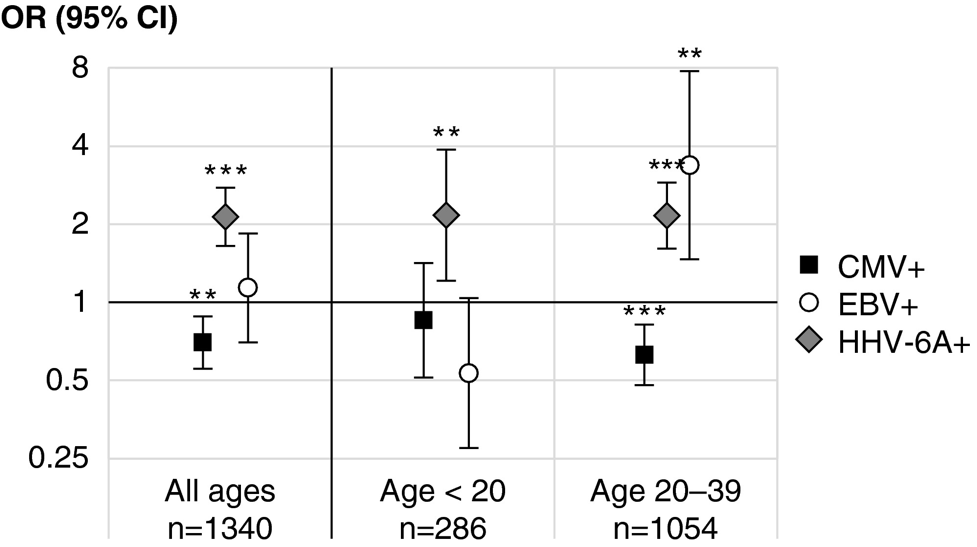Studies conducted on serum obtained before development of MS indicate a possible protective role.
EBV infection in late adolescence and early adulthood is an established risk factor for MS (Bjornevik 2022), and HHV-6A infection also has been emerging as a risk factor for MS (Bistrom 2021; Komaroff 2020; Engdahl 2019). In contrast, several past studies have found that seropositivity to another herpesvirus, cytomegalovirus (CMV), may protect against MS. The weakness of these studies has been that the serologic studies for CMV were conducted after the manifestations of MS developed.
Grut et al. of Umea University, Sweden performed serologic studies of CMV, EBV and HHV-6A on sera obtained years before the first symptoms of MS. Of 670 pairs of matched cases and controls, CMV seropositivity resulted in reduced risk for MS (OR=0.70 p = 0.003) (Figure 1).

Figure 1: Odds ratios for MS with seropositivity of CMV, and HHV-6A
The analysis found significant interactions between CMV seronegativity and antibodies to both HHV-6A (AP 0.34 95% CI 0.06-0.61) and EBV antigen EBNA-1 (AP 0.37 95%CI 0.09 - 0.65), among people ages 20-39. The highest MS risk was observed at age 20-39 in individuals who were seronegative for CMV and seropositive for both HHV-6A and EBNA-1 peptide (OR 16.4 p<0.0001).
This study provides reasonably strong evidence that CMV infection relatively early in life may protect against the development of MS. The study also adds to the evidence that EBV primary infection occurring in late adolescence or early adulthood, as well as HHV-6A primary infection occurring at any time of life, increase the risk of MS.
The combination of EBV seropositivity, HHV-6A seropositivity and CMV seronegativity in late adolescence/early adulthood greatly raised the risk of MS. The authors speculate that CMV infection elicits an aggressive immune response focused on CMV, and that this may reduce the likelihood of dysfunctional immune responses to EBV and HHV-6A that may lead to MS.
Read the full article: Grut 2021

